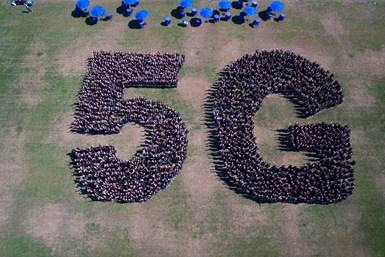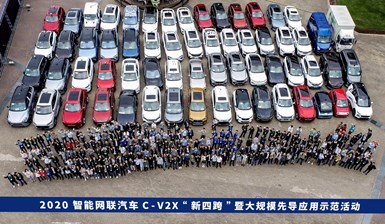C-V2X in China
There is some serious development of this critical technology going on in China
#electronics
While there is political rancor in the U.S vis-à-vis China, no one in the auto industry should take their eye off of what is occurring from a technology standpoint in China.

Qualcomm is big on 5G, which is beneficial to C-V2X. (Images: Qualcomm)
This became exceedingly obvious, to put it mildly, to say the least, when Qualcomm Technologies—part of the massive wireless (3G, 4G, 5G. . .) tech firm headquartered in San Diego—announced its collaboration with companies in China on the “2020 C-V2X Cross-industry & Large-scale Pilot Plugfest.” Strange though that name may sound, there should be no doubt that there is nothing in the least bit odd about what is occurring.
“C-V2X” is “cellular vehicle-to-everything.”
And as for the participants in the Plugfest:
- 40+ automakers
- 40+ terminal manufacturers
- 10+ chipset solution vendors
- 20+ information security vendors
- 5 map providers
- 5 position vendors
The purpose of the event was to demonstrate interoperability across
- Chip modules
- Terminals
- Vehicles
- Security platforms
- Maps
As for the testing, there were 180 C-V2X onboard units (OBUs) and roadside units (RSUs). Testing including a number of traffic scenarios.

2020 “Plugfest” participants in China.
There were five vehicle-to-infrastructure (V2I) use cases involving interoperability:
- In-vehicle signage
- Traffic light information push/green light optimal speed advisory
- Security mechanism demo
- Vulnerable road user collision warning
- Front construction reminder
And there were five vehicle-to-vehicle (V2V) use cases tested:
- Forward collision warning
- Emergency vehicle avoidance
- Abnormal vehicle warning
- Blind spot warning/left turn assistance
- Traffic jam warning in multi-access edge computing
Clearly, comprehensive.
Here’s a quote to ponder from Jim Misener, senior director, product management and global V2X ecosystem lead, Qualcomm Technologies:
“Today, 5G is empowering the automotive industry, expanding the set of application, and driving the C-V2X industry ecosystem to scale in China. Meanwhile, the solid foundation of the information and communication industry has also paved the way for C-V2X commercialization and implementation in China.”
“Driving the C-V2X industry ecosystem to scale.”
“Solid foundation.”
“C-V2X commercialization and implementation.”
Sounds like there is a high degree of readiness being developed.
None of this is to say that tests of C-V2X aren’t occurring in the U.S. Ford is working with Qualcomm. Audi, the Virginia Department of Transportation are running a pilot. And there are more.
But the scale of the participants in the Plugfest should give not pause, but a commitment to increase development of the technology that can significantly help save lives—everywhere.
RELATED CONTENT
-
Special Report: Toyota & Issues Electric
Although Toyota’s focus on hybrid powertrains at the seeming expense of the development of a portfolio of full battery electric vehicles (BEVs) for the market could cause some concern among those of an environmental orientation, in that Toyota doesn’t seem to be sufficiently supportive of the environment, in their estimation. Here’s something that could cause a reconsideration of that point of view.
-
2019 Volvo XC40 T5 AWD Momentum and R-Design
Back in 2004, Volvo introduced a concept vehicle, called “Your Concept Vehicle,” in which case the pronoun essentially referred to women because as the company pointed out, the YCC was “the first car designed and developed almost exclusively by women.” Some would say that Volvo was ahead of its time—way ahead—with this idea.
-
On Military Trucks, Euro Car Sales, Mazda Drops and More
Did you know Mack is making military dump trucks from commercial vehicles or that Ford tied with Daimler in Euro vehicle sales or the Mazda6 is soon to be a thing of the past or Alexa can be more readily integrated or about Honda’s new EV strategy? All that and more are found here.


.jpg;width=70;height=70;mode=crop)






